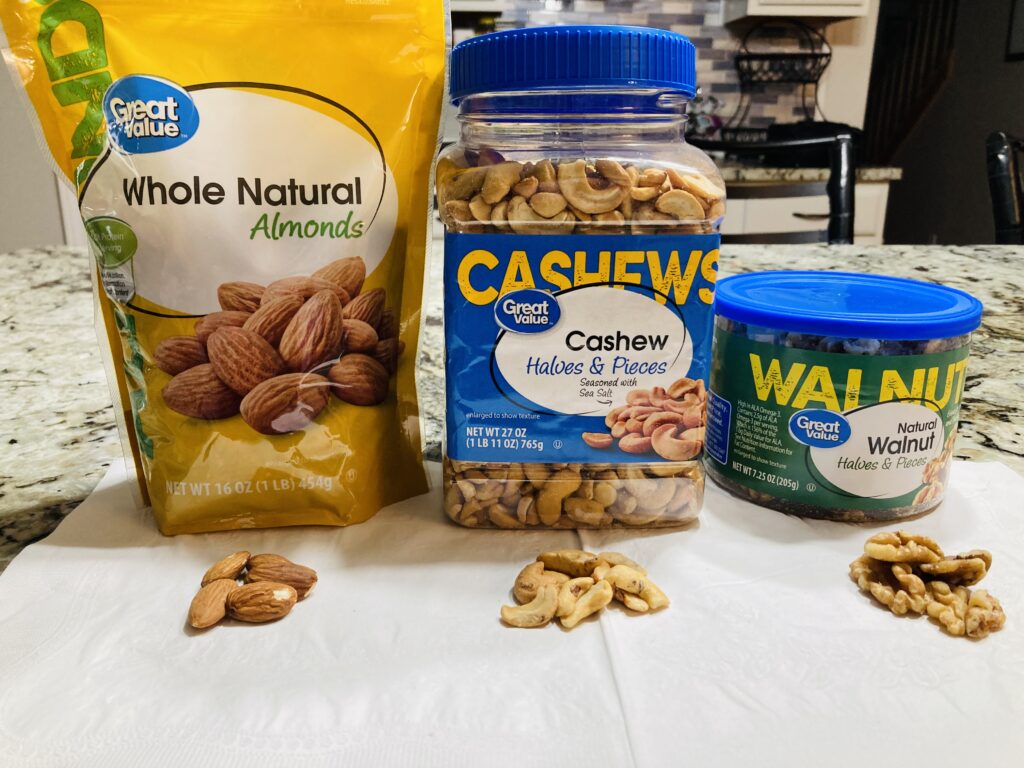Basil, has large glossy leaves, Peppery, fresh aroma and flavor. Compare to Thyme robust, earthy flavor, like mint and oregano and Small gray-green leaves, used in stews, soups, sauces.
Basil is a popular staple in Mediterranean and Southeast Asian cuisines, frequently featured in dishes like pesto and Caprese salad. Each herb brings its own distinct flair to the kitchen, adding a burst of flavor to a wide array of dishes.
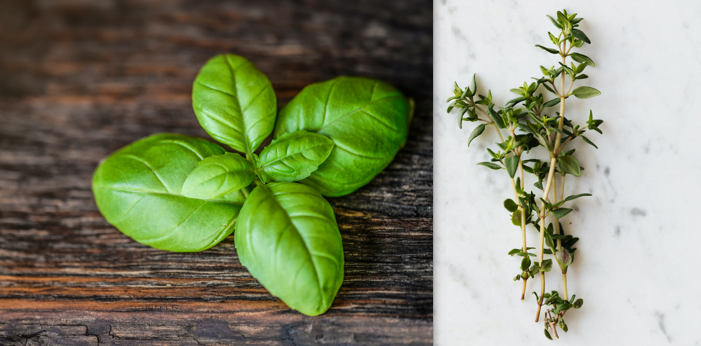
Tips on how to identify Basil vs Thyme
| Basil | Thyme |
|---|---|
| Basil leaves are broad, flat, and somewhat heart-shaped with serrated edges. | Thyme leaves are small and narrow, usually elongated, and have a more needle-like appearance. |
| Basil leaves are typically bright green, but some varieties may have purple or red hues. | Thyme leaves are usually green or gray-green, depending on the variety. |
| Basil plants are generally taller and have a bushy growth habit with larger leaves. | Thyme plants are often low-growing and form a spreading mat. They have a more compact and creeping growth habit. |
| Releases a strong, sweet, and aromatic scent, often described as having notes of clove and anise. | Thyme leaves have a distinct herbal fragrance with earthy and slightly minty undertones. |
| Basil plants produce spikes of small white, pink, or purple flowers. | Thyme plants also produce small flowers, typically in shades of white, pink, or lavender, arranged in clusters. |
| Basil is a popular herb in Mediterranean and Italian cuisines, commonly used in pesto, salads, and various dishes. | Thyme is a versatile herb used in a variety of cuisines, including Mediterranean and French. It pairs well with meats, vegetables, and sauces. |
| Basil is often associated with warmer climates and is sensitive to cold temperatures. It thrives in well-drained soil and prefers full sun. | Thyme is more cold-tolerant and can withstand a range of temperatures. It is well-suited to various soil conditions and also prefers full sun. |
Basil:
- Aroma and Flavor: Basil is characterized by its sweet, aromatic fragrance and a flavor profile that is simultaneously peppery, slightly spicy, and subtly sweet. It is often described as having a bright and fresh taste, with hints of mint, anise, and clove. The intensity of these flavors can vary depending on the variety of basil (e.g., sweet basil, Thai basil, etc.).
- Appearance: Basil leaves are large, tender, and glossy, ranging in color from deep green to purple, depending on the variety. They grow in opposing pairs along tender, square stems.
- Culinary Uses: Basil is a quintessential herb in Mediterranean and Southeast Asian cuisines. It is a key ingredient in dishes like pesto, caprese salad, and Thai curries. Basil is also commonly used as a finishing herb, added fresh just before serving for maximum flavor.
- Cultural Significance: Basil holds cultural and religious significance in various parts of the world. It is considered a symbol of love, protection, and good luck in some cultures, and is associated with sacred rituals and ceremonies.
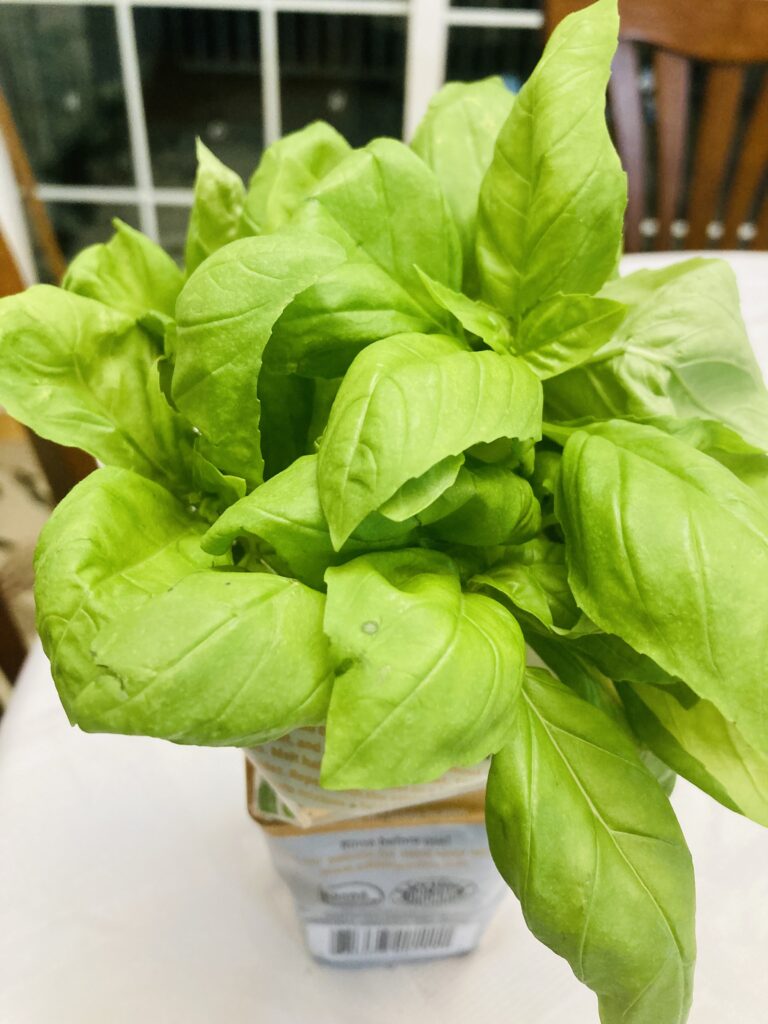
Thyme:
- Aroma and Flavor: Thyme is known for its robust, earthy aroma and flavor. It carries a warm, slightly pungent profile often likened to a combination of mint and oregano.
- Appearance: Thyme typically features small, narrow leaves that grow in clusters along woody stems. The leaves are gray-green in color, with a slightly fuzzy texture.
- Culinary Uses: Thyme is a versatile herb used in a wide range of savory dishes. It pairs well with meats, poultry, fish, and vegetables, and is often a key component in stews, soups, and sauces.
- Cultural Significance: Thyme has a rich history, dating back to ancient civilizations like the Greeks and Romans. It was used for its culinary and medicinal properties and was believed to symbolize courage and strength.
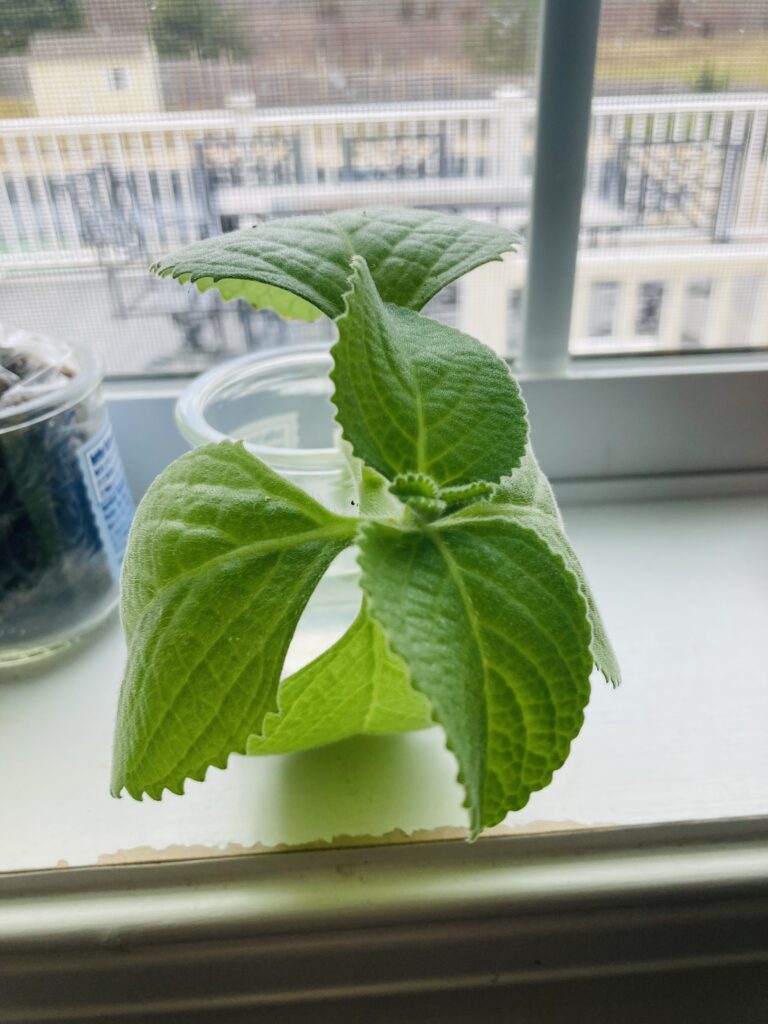
Key Taste bud tips when identifying the taste of Basil Vs Thyme
Basil:
- Sweet and Peppery: Basil has a sweet and slightly peppery flavor.
- Aromatic and Floral: The aromatic quality of basil is strong, and it has a pleasant floral and herbaceous taste.
- Anise or Clove: Depending on the variety, basil may have subtle hints of anise, clove, or mint.
Thyme:
- Earthy and Savory: Thyme has an earthy, savory, and slightly minty taste.
- Subtle Citrus Undertones: Some varieties of thyme may have subtle citrus undertones, adding a fresh and bright element to its flavor.
- Versatile and Robust: Thyme has a robust flavor that complements a wide range of dishes, including meats, stews, and soups.
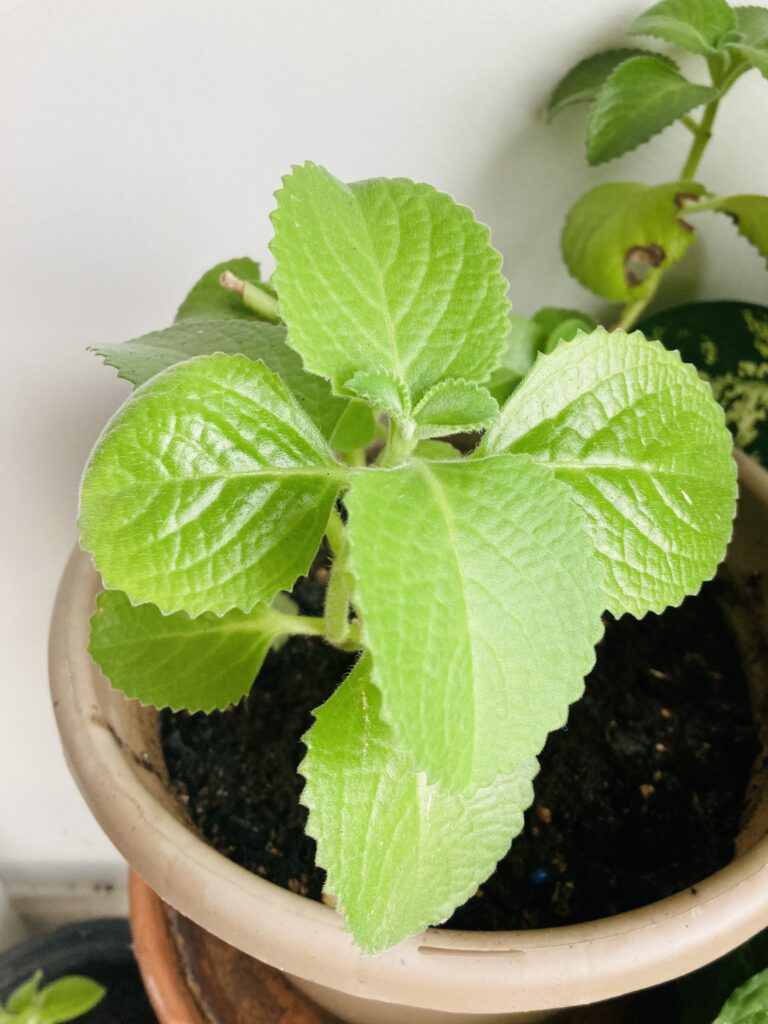
13 Amazing Types of Basil
From the classic sweet basil with its familiar licorice notes, to the exotic Thai basil with its spicy undertones, exploring these different cultivars opens up a world of culinary possibilities. Let’s explore the delightful varieties of basil, as we uncover their distinct characteristics and how they can elevate your culinary creations to new heights.
- Lemon basil
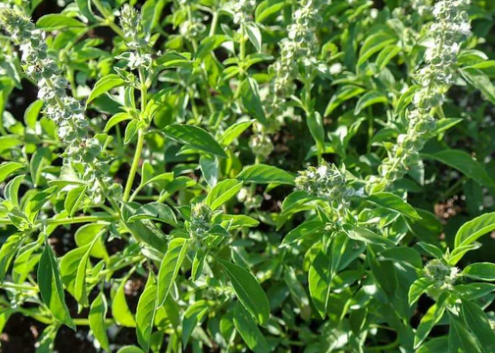
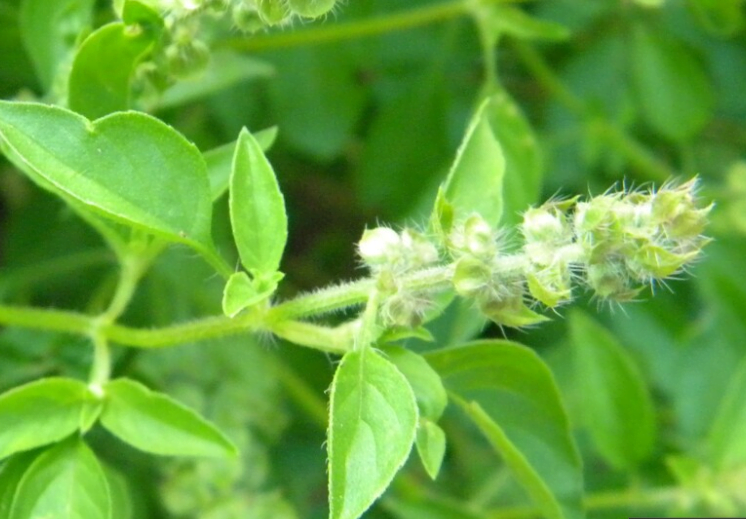
Also known as ‘Ocimum × africanum’ or ‘Ocimum citriodorum and known for its bright, citrusy aroma and flavor. It is a hybrid between basil and hoary basil, and it is commonly used in various culinary dishes to add a refreshing lemony twist. The leaves of lemon basil are typically light green and lance-shaped, similar to those of sweet basil.
It pairs particularly well with seafood, chicken, salads, and dishes with a Southeast Asian or Mediterranean influence. Additionally, lemon basil is often used to infuse oils, vinegars, and even beverages to impart its unique citrus flavor.
2. Christmas basil
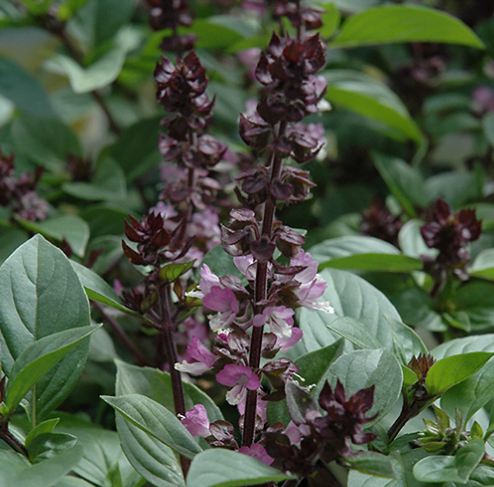
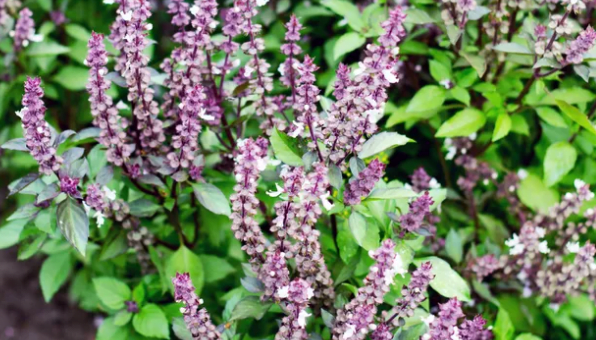
Christmas basil is a unique hybrid resulting from the fusion of Thai and Genovese basil varieties. It boasts deep purple stems and lighter-hued flowers akin to Thai basil, while its leaves exhibit the vibrant, glossy green characteristic of Genovese. The aromatic profile is a blend of herby, intricate scents evoking winter holiday sensations, reminiscent of pine needles and the fruity, spiced aroma found in mulled wine. This versatile herb imparts a savory essence that enhances the flavors of sauces, soups, and meat-based dishes in culinary endeavors.
3. African blue basil
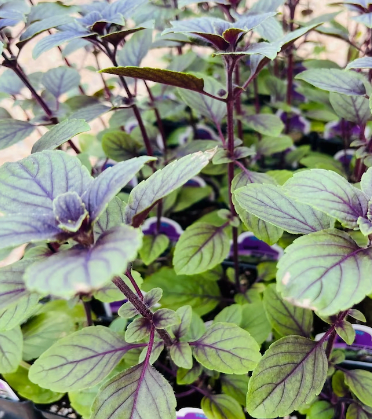
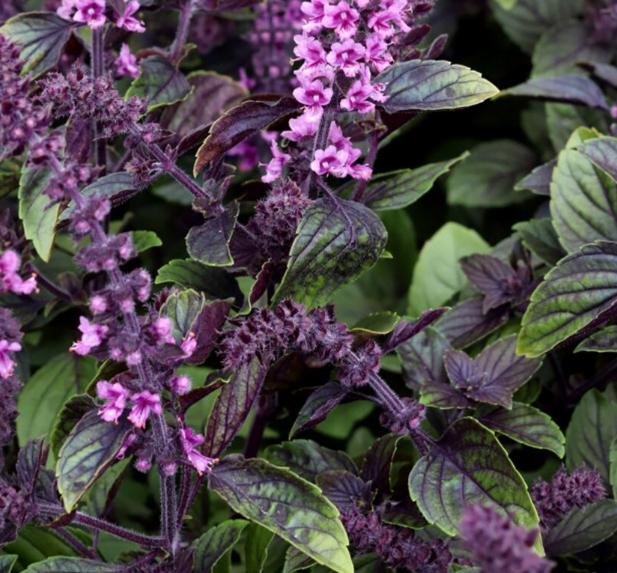
African blue basil (camphor basil and Dark Opal) is a cultivar of basil that is native to East Africa. It is a hybrid between two basil species: Ocimum kilimandscharicum and Ocimum basilicum. This cultivar is known for its distinctive purple-tinged leaves and a strong, spicy aroma with hints of licorice and cinnamon.
African blue basil is popular not only for its culinary uses but also for its ornamental qualities. It is often grown in gardens for its attractive foliage and ability to attract pollinators like bees and butterflies. The leaves can be used in a similar way to other basil varieties, adding flavor to dishes like salads, soups, and sauces.
One unique characteristic of African blue basil is that it tends to be more tolerant of cooler temperatures compared to other basil varieties. This can make it a good option for growing in regions with shorter growing seasons.
It’s worth noting that while African blue basil shares some similarities with more common basil varieties like sweet basil (Ocimum basilicum), its flavor profile and appearance are distinct. If you’re planning to use it in a recipe, be aware that the flavor may be stronger and slightly different than what you’d expect from the more common sweet basil.
4. French Basil
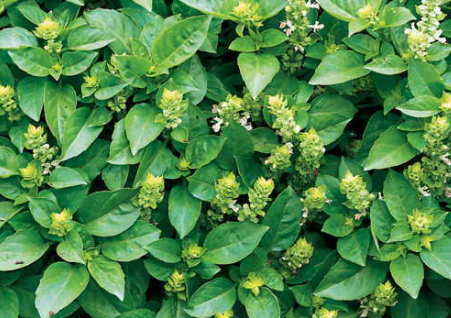
Referred to as Marseilles basil, is a cherished heirloom variety characterized by its compact growth and slightly larger leaves compared to other globe basil varieties it is slightly sweeter than other varieties . This particular basil exudes a robust and delightful fragrance. In the realm of French cuisine, it plays a prominent role in the creation of pistou, a flavorful herb sauce similar to pesto.
5. Napoletano basil
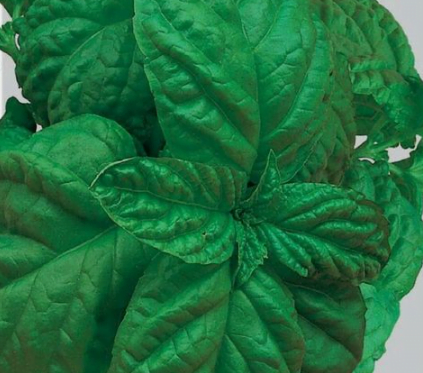
Napoletano Basil leaves can get really big and this plant prefers sun. loves water and rich soil. Sensitive to cold. Snip buds to encourage more branches and leaves.
Native to Naple and Italy and is widely grown. It is known for its distinctive flavor and aroma. some characteristic features has a strong, sweet, and aromatic fragrance. This aroma is a key characteristic that sets it apart from other basil varieties. It has a robust, slightly sweet, and peppery flavor profile. This makes it a popular choice for Italian dishes, particularly in the region of Naples. The leaves of Napoletano basil are typically medium to dark green, with a smooth and glossy texture. They are generally oval or lance-shaped, and can be quite large compared to some other basil varieties.
6. Lime basil /Thai basil
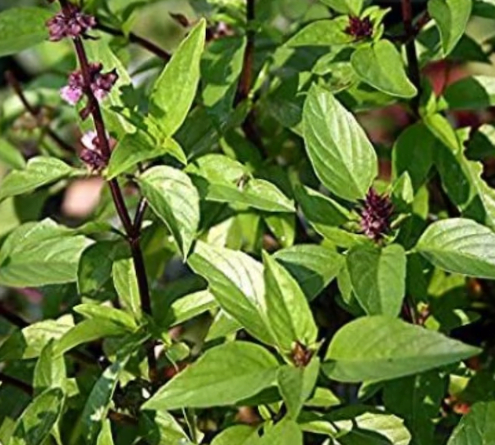
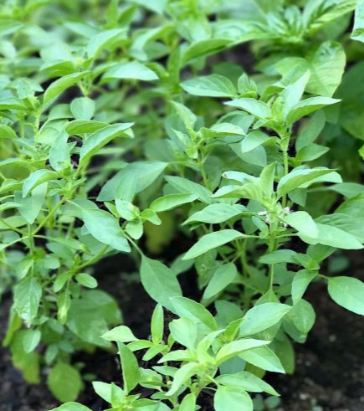
Lime basil, also known as Thai basil, is a type of basil (Ocimum basilicum) that has a distinct citrusy flavor with notes of lime. It is commonly used in Southeast Asian cuisine, particularly in Thai, Vietnamese, and Indonesian dishes. The leaves of lime basil are typically green and have a slightly glossy appearance.
Lime basil is often used in various recipes, including curries, stir-fries, soups, and salads. It pairs well with ingredients like garlic, ginger, coconut milk, chili, and lemongrass. Additionally, it can be used to add flavor to beverages, such as cocktails or infused water.
7. Green Ruffles basil
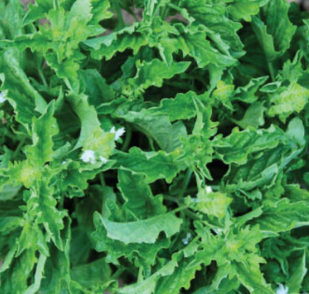
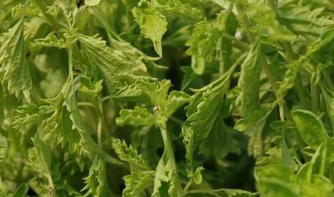
Green ruffle basil, also known as lettuce leaf basil or Thai basil, is a variety of basil (Ocimum basilicum) known for its large, crinkled leaves. It is a popular herb in various cuisines, particularly in Thai and Southeast Asian dishes. The leaves are typically bright green, broad, and have a slightly sweet and spicy flavor with hints of anise and clove.
Green ruffle basil is often used fresh, as the flavor is best preserved that way. It is commonly added to salads, stir-fries, soups, and curries. It’s also a key ingredient in dishes like Thai basil chicken and Vietnamese pho. If you’re planning to use green ruffle basil in your cooking, consider adding it towards the end of the cooking process to preserve its flavor and aroma. Keep in mind that basil can lose some of its potency when dried, so fresh leaves are usually preferred in most recipes.
8. Holy Basil
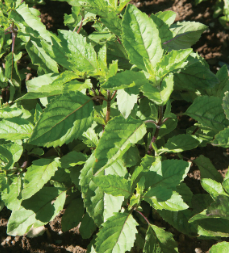
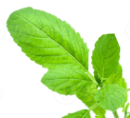
Holy basil, also known as Ocimum tenuiflorum or Tulsi, is a sacred plant in Hinduism, and it holds significant cultural and religious importance in India. It is considered the “Queen of Herbs” and is revered for its medicinal and spiritual properties.
Holy basil leaves are typically green, but they can vary in size and shape. They are usually elliptical or oval, with serrated edges. The leaves have a slightly glossy texture, and they may be covered in fine, soft hairs.
In traditional Indian medicine (Ayurveda), holy basil is valued for its various health benefits. It is believed to have adaptogenic properties, which means it may help the body adapt to stress and promote overall well-being. It is also known for its anti-inflammatory, antibacterial, and antioxidant properties.
Holy basil is used in a variety of forms, including fresh leaves, dried leaves, powdered form, or as an essential oil. It is commonly used to make teas, tinctures, and supplements.
Religiously, holy basil is considered sacred to the Hindu god Vishnu and is used in various religious ceremonies and rituals. It is often planted around Hindu households and temples. In many Indian homes, it is customary to have a holy basil plant in the courtyard or in a special pot.
The leaves of holy basil are used in cooking and are known to add a distinctive aroma and flavor to dishes. They are used in a variety of Indian dishes and can also be found in Thai cuisine.
9. Globe Basil or sweet basil

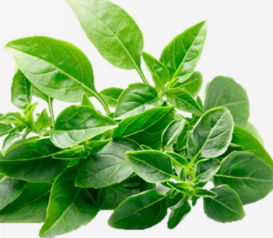
Globe basil” typically refers to a variety of basil known as “Sweet Basil” (Ocimum basilicum). It is one of the most common types of basil used in culinary applications around the world. Sweet basil has a distinct, aromatic scent and a sweet, slightly peppery flavor.
The term “globe” may be used to describe the compact, rounded shape of the basil plant, which is often seen in its cultivated form. Globe basil is a popular choice for container gardening and can be grown both indoors and outdoors.
This type of basil is commonly used in various cuisines, especially in Italian dishes like pesto, caprese salad, and tomato-based sauces. It’s also used in Thai and other Southeast Asian cuisines. Basil is known for its versatility and can be used fresh, dried, or in the form of essential oils. It’s a key ingredient in many recipes and adds a distinctive flavor and aroma to dishes.
10. Dark Opal Basil
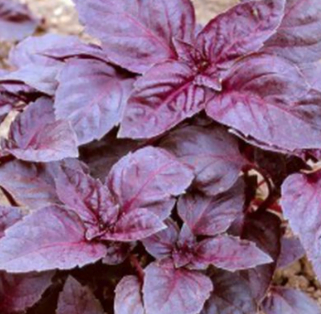
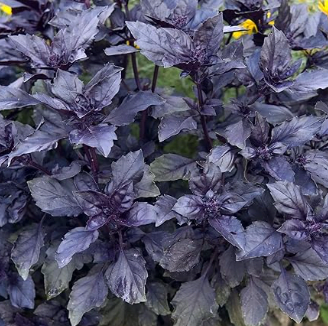
Dark opal basil, also known as Purple Ruffles basil, is a cultivar of basil (Ocimum basilicum), a popular culinary herb. It is characterized by its striking dark purple-red leaves, which are deeply ruffled, giving the plant an ornamental appearance. The leaves are aromatic and have a similar flavor profile to sweet basil, with a slightly peppery and clove-like taste.
Dark opal basil is commonly used in cooking to add color and flavor to a variety of dishes. It can be used in salads, pesto, sauces, and as a garnish. Like other basil varieties, it pairs well with tomatoes, garlic, and olive oil.
In addition to its culinary uses, dark opal basil is sometimes grown for its decorative value in gardens, where its vibrant purple leaves can provide an attractive contrast to other green herbs and plants.
11. Greek Basil
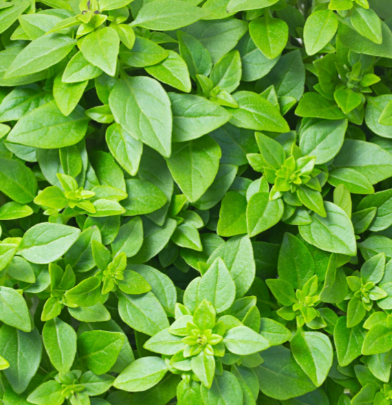
Greek basil, also known as “Ocimum basilicum var. minimum,” is a variety of basil that is native to Greece and other Mediterranean regions. It is a popular herb used in Mediterranean cuisine, known for its aromatic and slightly spicy flavor.
Greek basil has smaller leaves compared to other basil varieties, and they are bright green in color. The leaves are highly aromatic and have a slightly peppery, licorice-like taste. It is commonly used to flavor a variety of dishes, including salads, pasta sauces, soups, and meat dishes.
12. Genovese basil or Italian basil
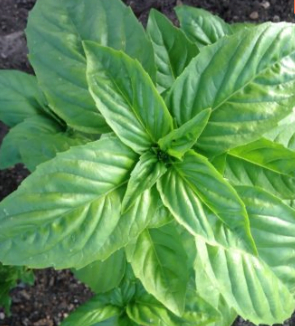
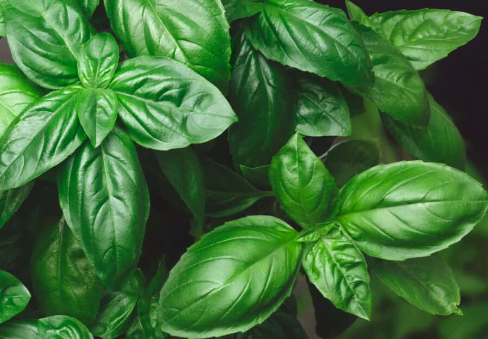
is a variety of basil known for its sweet and aromatic leaves. It is one of the most popular types of basil used in Italian cuisine, particularly in the famous dish pesto sauce. The leaves are bright green, relatively large, and have a distinctive fragrance and flavor.
Genovese basil is characterized by its smooth, shiny leaves that are slightly cupped. It is often grown for culinary purposes and is a staple herb in Mediterranean cooking. It’s used in a variety of dishes, including salads, pasta, pizza, and more.
In addition to its culinary uses, basil, including Genovese basil, has been traditionally used for its potential health benefits and medicinal properties. It’s rich in vitamins and antioxidants and is sometimes used in herbal remedies.
13. Cinnamon basil
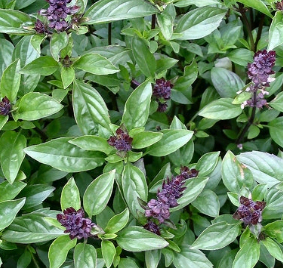
Cinnamon basil is a low-maintenance herb that thrives with six to eight hours of direct sunlight daily.it can actually persist as a perennial in USDA plant hardiness zones 9–11. Gardeners often strategically plant cinnamon basil in proximity to tomatoes and roses to deter pests like whiteflies.
known for its distinct cinnamon-like flavor and aroma. It is a cultivar of sweet basil, which is commonly used in cooking. Cinnamon basil gets its name from the warm, spicy, and slightly sweet taste that resembles cinnamon. Cinnamon basil has a unique flavor that combines elements of cinnamon with the traditional basil taste. It can add a warm and spicy dimension to dishes.
The leaves of cinnamon basil are typically dark green and somewhat glossy. They are slightly narrower and more serrated than the leaves of sweet basil.Like other basil varieties, cinnamon basil is used in various culinary applications. It can be used fresh in salads, as a garnish, or as an ingredient in sauces, soups, and other dishes. It pairs well with fruits, especially those with tart or citrusy flavors.
10 Types of Thyme
Thyme is a fragrant and versatile herb that is commonly used in cooking, particularly in Mediterranean, Middle Eastern, and European cuisines. It belongs to the genus Thymus and is a member of the mint family (Lamiaceae). Thyme is native to the Mediterranean region but is now cultivated and used worldwide.
The plant typically features small, narrow leaves that are green or gray-green in color. It can grow as a low, spreading shrub or as an upright plant, depending on the specific variety. Thyme has a distinctive aroma and flavor, which is often described as earthy, slightly minty, and with a hint of lemon.
Thyme is used both fresh and dried in various culinary applications. It is a popular ingredient in soups, stews, sauces, marinades, and roasted dishes. It pairs well with a wide range of foods, including meats, poultry, fish, vegetables, and legumes.
1. Common Thyme (Thymus vulgaris):
This is the most widely used variety of thyme. It has small gray-green leaves and a strong, earthy flavor. It is commonly used in Mediterranean cuisine and is a key ingredient in dishes like soups, stews, and roasted meats.
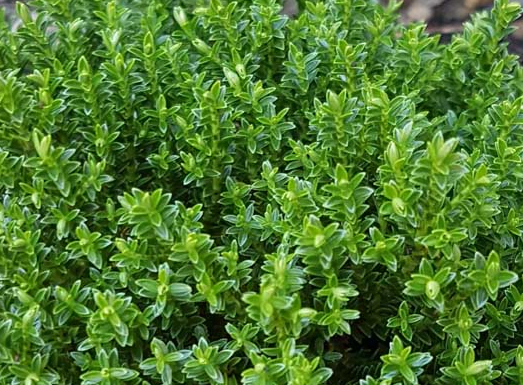
Common thyme (Thymus vulgaris) is a fragrant herb that is native to southern Europe and the Mediterranean region. It is a member of the mint family (Lamiaceae) and is known for its aromatic leaves, which are used as a culinary herb in a variety of dishes. Here are some key characteristics and uses of common thyme:
- Appearance: Common thyme is a small, perennial herb that typically grows to a height of about 15-30 centimeters (6-12 inches). It has woody stems and small, oval-shaped leaves that are usually green-gray in color.
- Flowering: In late spring to early summer, common thyme produces clusters of small, tubular, pale purple to pinkish flowers. These flowers are attractive to bees and other pollinators.
- Aroma and Flavor: The leaves of common thyme are highly aromatic and have a pungent, earthy, and slightly minty flavor. The fragrance and flavor of thyme come from the essential oils present in its leaves.
- Culinary Uses: Common thyme is a popular culinary herb and is used to flavor a wide range of dishes, including soups, stews, sauces, roasted meats, and vegetables. It is a staple herb in Mediterranean cuisine.
- Medicinal Uses: Thyme has a long history of use in traditional medicine. It is believed to have various health benefits, including anti-inflammatory, antibacterial, and antioxidant properties. Thyme has been used to treat respiratory conditions, digestive issues, and as a natural antiseptic.
- Essential Oil: The essential oil extracted from thyme is used in aromatherapy and as an ingredient in natural remedies. It is believed to have antimicrobial properties and is used in some personal care products.
- Cultivation: Common thyme is relatively easy to grow and can thrive in a variety of soil types, as long as it is well-drained. It prefers full sun but can tolerate some light shade. It is a drought-tolerant plant once established.
- Companion Plant: Thyme is considered a beneficial companion plant in gardens. It can help repel certain pests and attract beneficial insects like bees.
- Cultural Significance: Thyme has symbolic significance in various cultures. In ancient Greece, it was associated with courage, and Roman soldiers would bathe in thyme-infused water to boost their strength. In the Middle Ages, it was used to ward off evil spirits.
- Varieties: There are several cultivars and varieties of thyme, each with slightly different flavors and growth habits. Some examples include lemon thyme (with a citrusy aroma), caraway thyme (with a hint of caraway flavor), and creeping thyme (a low-growing variety often used as ground cover).
2. Lemon Thyme (Thymus citriodorus):
As the name suggests, lemon thyme has a lemony aroma and flavor. It is a hybrid of common thyme and another species. It is often used in recipes that call for a citrusy touch, such as marinades, salad dressings, and fish dishes.
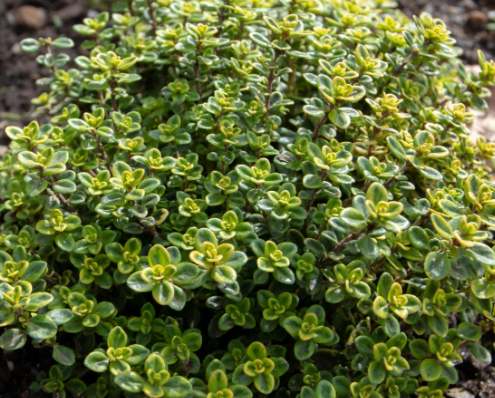
Lemon thyme (Thymus citriodorus) is a herb that is a cultivar of common thyme (Thymus vulgaris) but has a distinct lemony flavor and aroma. It is widely used in culinary applications to add a citrusy and herby flavor to dishes. Here are some key characteristics and uses of lemon thyme:
- Appearance: Lemon thyme has small, narrow, and aromatic leaves that are green-gray in color. It is a low-growing perennial herb that typically reaches a height of about 6 to 12 inches.
- Flavor and Aroma: As the name suggests, lemon thyme has a citrusy, lemon-like flavor and aroma, which sets it apart from regular thyme. This makes it a popular choice for adding a fresh, zesty note to dishes.
- Culinary Uses: Lemon thyme is a versatile herb that can be used in a wide range of culinary applications. It pairs well with various dishes, including poultry, fish, vegetables, salads, and marinades. It can also be used to flavor soups, sauces, and dressings.
- Medicinal Properties: Like other thyme varieties, lemon thyme has been used historically for its potential medicinal properties. It contains compounds that are believed to have antimicrobial, anti-inflammatory, and antioxidant properties. However, it’s important to note that it should not be used as a substitute for professional medical advice or treatment.
- Gardening: Lemon thyme is relatively easy to grow and is a popular choice for herb gardens. It thrives in well-drained soil and prefers full sun to partial shade. It can be grown in pots or in the ground.
- Propagation: Lemon thyme can be propagated from seeds, cuttings, or by dividing established plants. It’s a hardy herb that can withstand a range of growing conditions.
- Companion Planting: Some gardeners use lemon thyme as a companion plant to help repel certain pests from their gardens. It can be planted alongside other crops to potentially deter pests.
- Varieties: There are several cultivars of lemon thyme, each with its own subtle variations in flavor, aroma, and appearance. Some popular varieties include ‘Aureus’ (with golden leaves), ‘Silver Queen’ (with variegated leaves), and ‘Archer’s Gold’ (with bright green leaves).
3. Orange Thyme (Thymus fragrantissimus):
This thyme variety has a distinct orange fragrance and flavor. It is less commonly used compared to lemon thyme but can be used in similar ways.
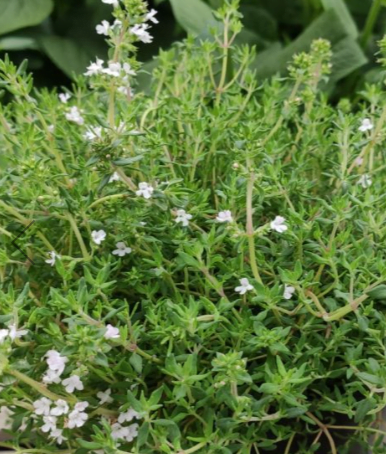
4. Creeping Thyme (Thymus serpyllum):
Also known as wild thyme, this variety has small, dark green leaves and a spreading growth habit. It is often used as ground cover in gardens and has a milder flavor compared to common thyme. It is suitable for use in salads, as a garnish, or as a mild seasoning.
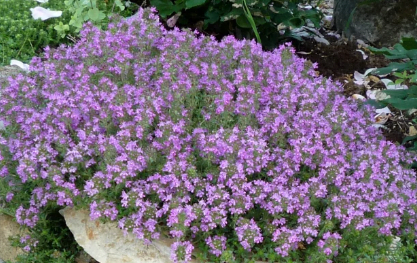
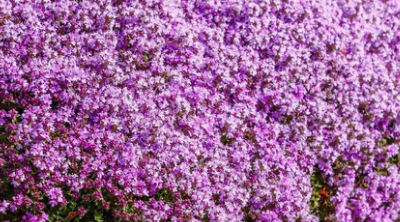
5. Caraway Thyme (Thymus herba-barona):
This thyme variety has a strong scent of caraway and is often used in European cuisine. It pairs well with roasted meats, vegetables, and in bread recipes.

6. Woolly Thyme (Thymus pseudolanuginosus):
This thyme variety has fuzzy, silvery leaves and is often used for ornamental purposes in gardens. Its culinary uses are limited, but it can be used in a similar manner to common thyme.

7. French Thyme (Thymus vulgaris ‘French’):
This is a cultivar of common thyme. It has a milder flavor compared to its parent plant and is often used in French cuisine, especially in dishes like Bouquet Garni and Herbes de Provence.
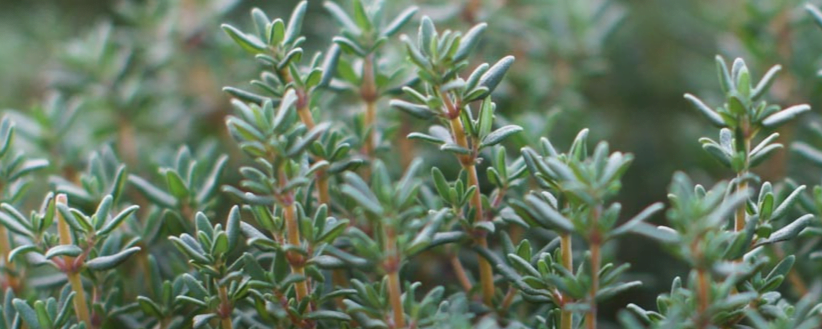
8. Silver Thyme (Thymus vulgaris ‘Argenteus’):
This cultivar of common thyme has silvery-gray leaves, making it a popular choice for ornamental purposes. It can be used in cooking in a manner similar to common thyme.
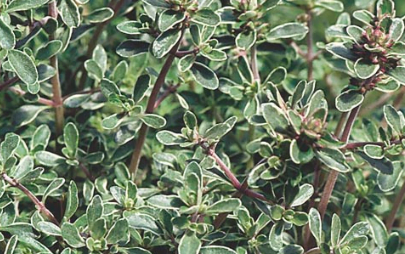
9. Elfin Thyme (Thymus serpyllum ‘Elfin’):
This is a compact, slow-growing variety of creeping thyme. It is often used in rock gardens or as a ground cover. It has a mild thyme flavor and can be used in culinary applications.
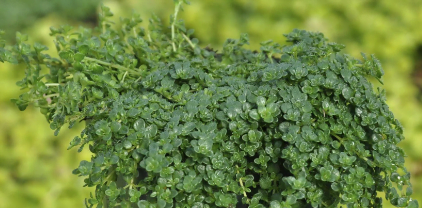
Caribbean Thyme/Tiki Thyme:
This thyme is found in every Caribbean kitchen and herb garden and is widely use in many dishes. It is the main ingredients in creating Caribbean green seasoning. Each Caribbean island has its own unique name for this thyme. In St Kitts & Nevis it is call sticky thyme, in Guyana it is call flat leaf thyme ,in St Vincent & the Grenadines it is call tiki thyme. In Trinidad & Tobago it is call Podina.
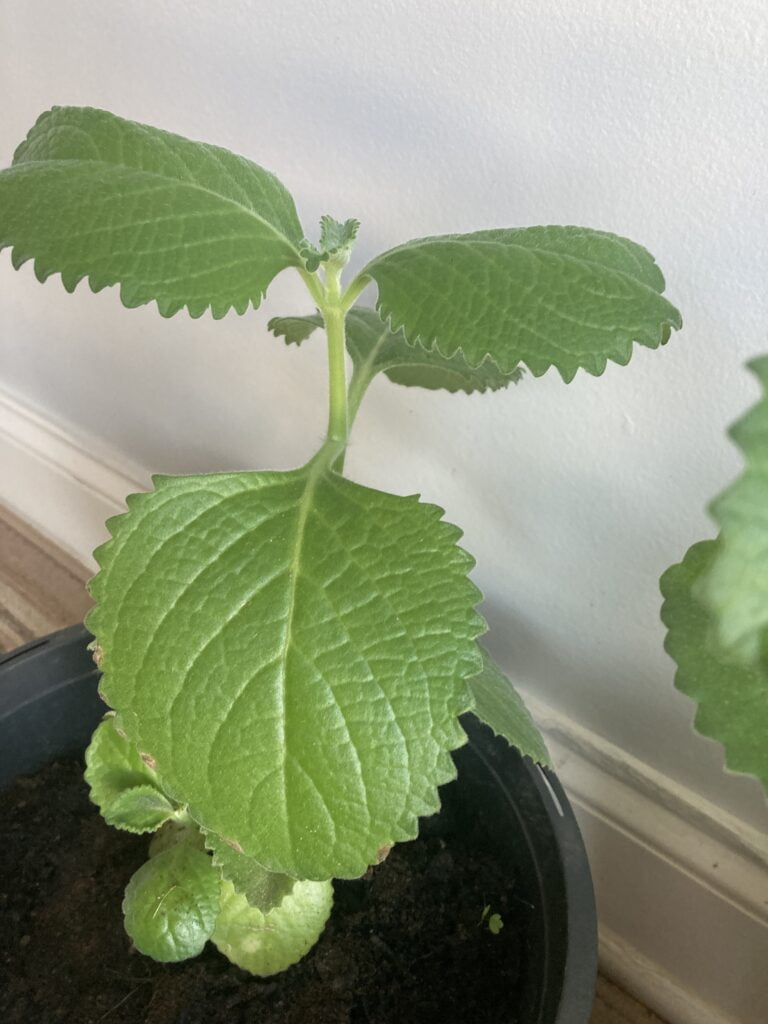
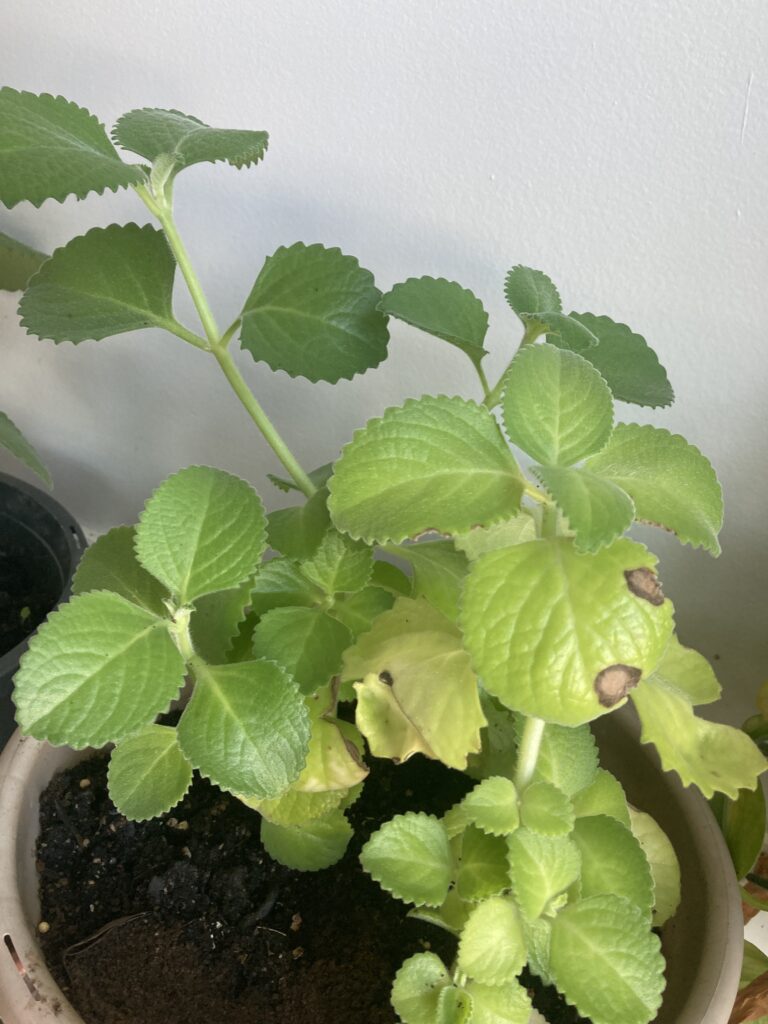
This thyme, native to Africa, holds significant cultural and medicinal value for the people of the Caribbean. Its leaves are utilized to brew a tea that proves effective in alleviating symptoms associated with the flu, coughs, asthma, and nausea. Moreover, it is believed to possess properties that can mitigate swelling and regulate high blood pressure.
The plant finds various applications in pregnancy-related matters, aiding with morning sickness, inducing labor in overdue mothers, and promoting milk production after childbirth.
Additionally, it serves as a remedy for insect bites when applied topically. Given its introduction to Europe prior to its arrival in the Caribbean, it is commonly known as Spanish Thyme, reflecting its historical journey and influence. Within the Caribbean, this plant is bestowed with diverse names and holds distinct cultural significance to Caribbean and South American.
It grow well in tropical climate and can grow well in cold climate if kept indoor .I personally own this plant that I grow indoors in pots and I use it for my seasonings as well as tea.
Health benefits of Basil and Thyme
Basil:
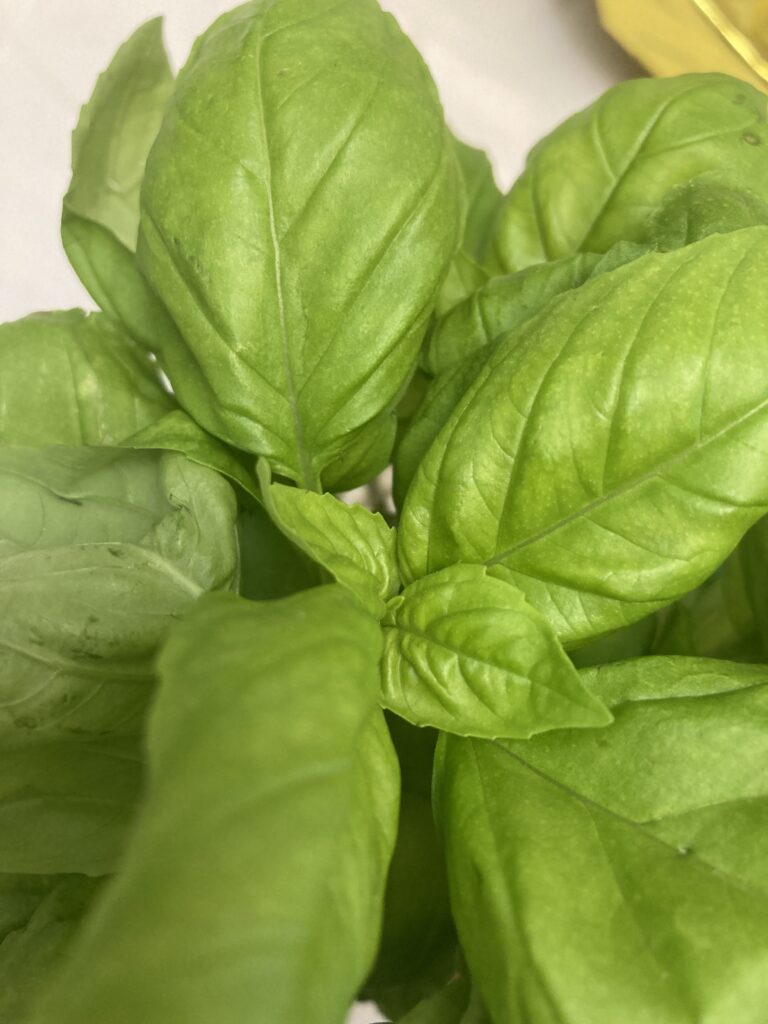
- Rich in Antioxidants: Basil contains compounds like flavonoids and volatile oils, which have strong antioxidant properties. Antioxidants help protect cells from damage caused by free radicals.
- Anti-Inflammatory Properties: Some of the compounds in basil, such as eugenol, have anti-inflammatory effects. This may help in reducing inflammation in the body.
- Antimicrobial Properties: Basil contains certain compounds that have been shown to have antimicrobial properties, which may help in fighting against harmful bacteria, viruses, and fungi.
- Improves Digestive Health: Basil may help with digestion by promoting the production of digestive enzymes. It can also help in relieving symptoms like bloating and indigestion.
- May Support Heart Health: Some studies suggest that basil may help lower blood pressure and cholesterol levels, which are important factors for heart health.
- Potential Anti-Cancer Properties: Some research suggests that certain compounds in basil may have anti-cancer properties, though more studies are needed to confirm this.
- Antispasmodic and Sedative properties: Place 1 teaspoon dried basil leaves in a cup fill it with boiling water and let stand for 10 minutes. Strain and drink.
Thyme:
- Rich in Antioxidants: Like basil, thyme is also rich in antioxidants, which help protect cells from damage caused by free radicals.
- Antibacterial Properties: Thyme contains compounds like thymol, which have been shown to have strong antibacterial properties. This can be beneficial for oral health and in fighting off infections.
- Respiratory Health: Thyme has been traditionally used to relieve respiratory issues like coughs and congestion. It contains compounds that may help relax the muscles of the respiratory tract.
- Anti-Inflammatory Effects: Thyme may help reduce inflammation in the body, which is important for conditions like arthritis.
- Digestive Health: Thyme can help stimulate the production of digestive juices, aiding in digestion.
- Rich in Vitamins and Minerals: Thyme is a good source of vitamins like vitamin C, vitamin A, and vitamin K, as well as minerals like iron, calcium, and manganese.
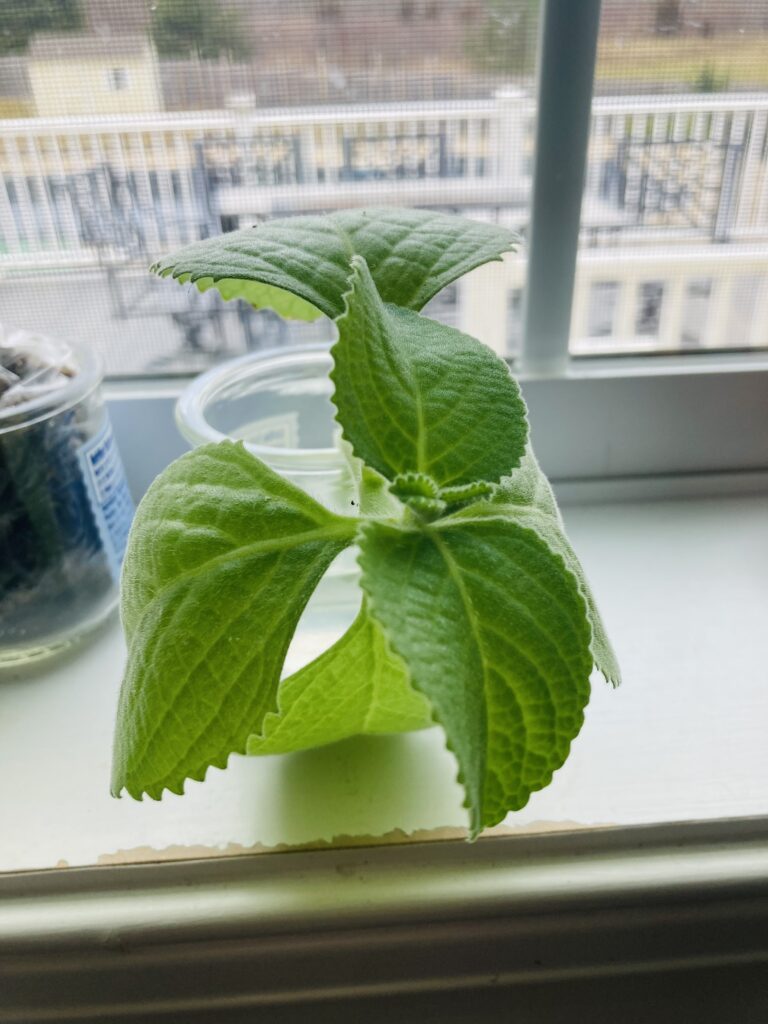
Basil and Thyme interaction to drugs/medications
Basil:
- Blood Clotting Medications (Anticoagulants/Antiplatelets): Basil contains compounds like eugenol that may have antiplatelet effects. If you are taking medications like aspirin, warfarin, or other blood-thinning medications, consuming large amounts of basil (such as in concentrated supplements) could potentially increase the risk of bleeding. It’s advisable to consult your healthcare provider for personalized advice.
2. Diabetes Medications: Basil may help lower blood sugar levels. If you are taking medications for diabetes, consuming large amounts of basil could potentially lead to low blood sugar levels (hypoglycemia). Monitor your blood sugar levels closely and consult your healthcare provider for guidance.
Thyme:
- Blood Clotting Medications (Anticoagulants/Antiplatelets): Thyme contains compounds like thymol that may have antiplatelet effects. Similar to basil, if you are taking blood-thinning medications, consuming large amounts of thyme (such as in concentrated supplements) could potentially increase the risk of bleeding. Consult your healthcare provider for personalized advice.
- Blood Pressure Medications: Thyme may have a mild hypotensive (blood pressure lowering) effect. If you are taking medications for high blood pressure, consuming large amounts of thyme could potentially lead to low blood pressure. Monitor your blood pressure closely and consult your healthcare provider for guidance.
- Antidiabetic Medications: Like basil, thyme may help lower blood sugar levels. If you are taking medications for diabetes, consuming large amounts of thyme could potentially lead to low blood sugar levels. Monitor your blood sugar levels closely and consult your healthcare provider for guidance.
These potential interactions are based on larger amounts of basil or thyme than what is typically consumed in culinary use. If you have specific concerns about the potential interactions between basil, thyme, and your medications or medical conditions, it is best to consult with a healthcare professional for personalized advice. They can provide guidance based on your individual circumstances.
Tips on How to keep Basil and Thyme fresh
- Water Method for Basil:
- Trim the stems: Before storing basil, trim the ends of the stems. This helps the basil absorb water more effectively.
- Place in a glass of water: Fill a glass or a jar with about an inch of water and place the basil stems in it, similar to how you would with a bouquet of flowers.
- Cover with a plastic bag: Loosely cover the basil and glass with a plastic bag. This creates a mini greenhouse effect that helps maintain humidity.
- Store at room temperature: Leave the glass on your kitchen counter, away from direct sunlight. Change the water every few days to keep it fresh.
- Water Method for Thyme:
- Trim the stems: Similar to basil, trim the ends of the thyme stems.
- Place in a jar of water: Put the thyme stems in a jar filled with a small amount of water, just enough to cover the stems’ ends.
- Cover with a plastic bag: Loosely cover the jar with a plastic bag to create a humid environment.
- Store at room temperature: Keep the jar on your kitchen counter, away from direct sunlight. Change the water every few days.
- Paper Towel Method for Both Basil and Thyme:
- Trim and wrap in a paper towel: Gently wash and dry the herbs. Lay them out on a paper towel and roll them up loosely. Place this bundle in a plastic bag with a few holes poked in it to allow for some airflow.
- Store in the refrigerator: Place the bag in the crisper drawer of your refrigerator. The paper towel helps absorb excess moisture, which can lead to rot.
- Freezing Method (for longer-term storage):
- Wash and dry the herbs thoroughly.
- Remove leaves from stems and spread them on a baking sheet in a single layer.
- Flash freeze: Place the baking sheet in the freezer for a few hours until the leaves are frozen.
- Transfer to a sealed container or a plastic freezer bag. Label it with the date for easy reference.
- Use frozen herbs in cooking as needed.
Remember that both basil and thyme are sensitive to cold temperatures, so avoid storing them in the refrigerator unless you’re using the paper towel method or freezing them.
Additionally, always check the herbs regularly for signs of wilting, and remove any damaged leaves to prevent them from affecting the rest of the bunch. With proper care, you can extend the freshness of your basil and thyme for a longer period of time.





